
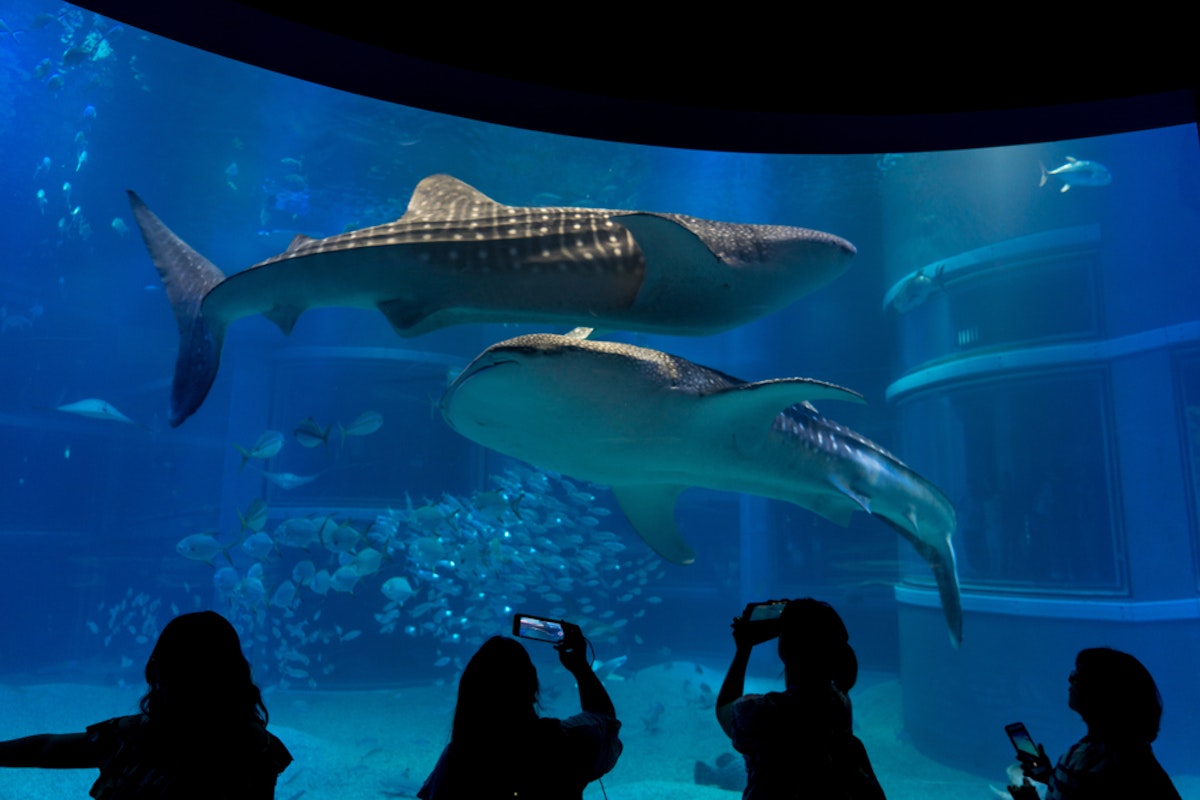
Osaka Aquarium Kaiyukan is a top destination for anyone interested in marine life. As one of the world's largest aquariums, it offers an incredible view of underwater ecosystems, from the open Pacific to icy Arctic waters.
The aquarium's highlight is its massive central tank, home to whale sharks and other ocean giants. Visitors can also see notable marine creatures, like sea lions, alongside exhibits featuring everything from sea otters to jellyfish.
Each section recreates a specific marine habitat, allowing visitors to see animals in environments that match their natural homes. Kaiyukan isn't just about display—it's about understanding the diversity and importance of marine life.
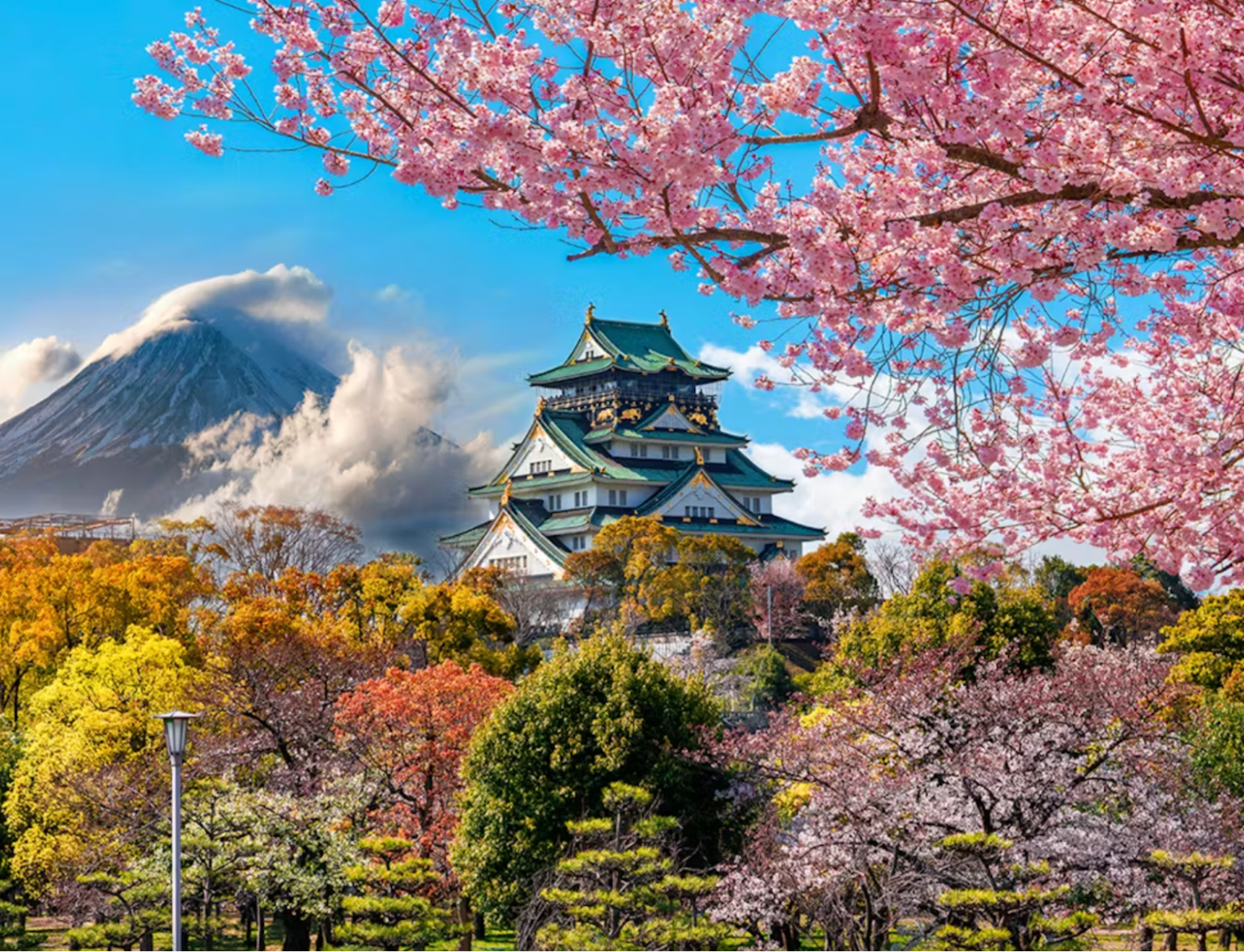
Uncover Osaka's wonders with the Osaka Amazing Pass.
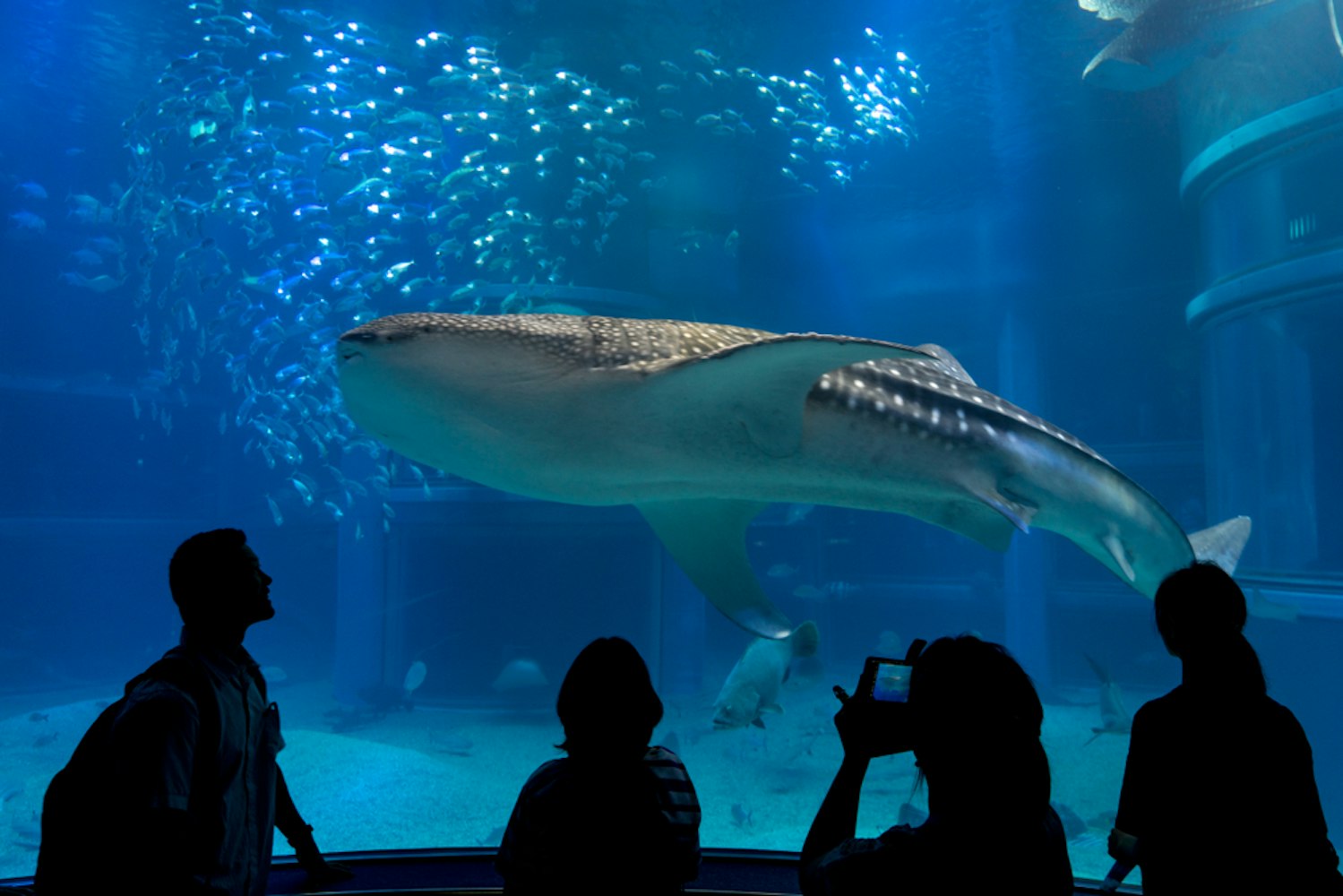
The Pacific Ocean Tank is the heart of Kaiyukan and one of the most giant indoor tanks in the world. Standing nine meters deep and holding 5,400 tons of water, it replicates a section of the open Pacific, showcasing its grandeur.
The star of this exhibit is the whale shark, the largest fish in the ocean. Whale sharks can grow up to 12 meters long, and seeing one swim up close is breathtaking.
Despite their size, whale sharks are gentle filter-feeders, sifting plankton through their massive mouths as they glide along. In addition to the whale shark, the Pacific Ocean Tank is home to various types of rays, hammerhead sharks, and schools of colorful fish that enhance the vibrant underwater scene.
The design allows you to walk around it and see these creatures from different angles, creating an immersive and awe-inspiring experience.
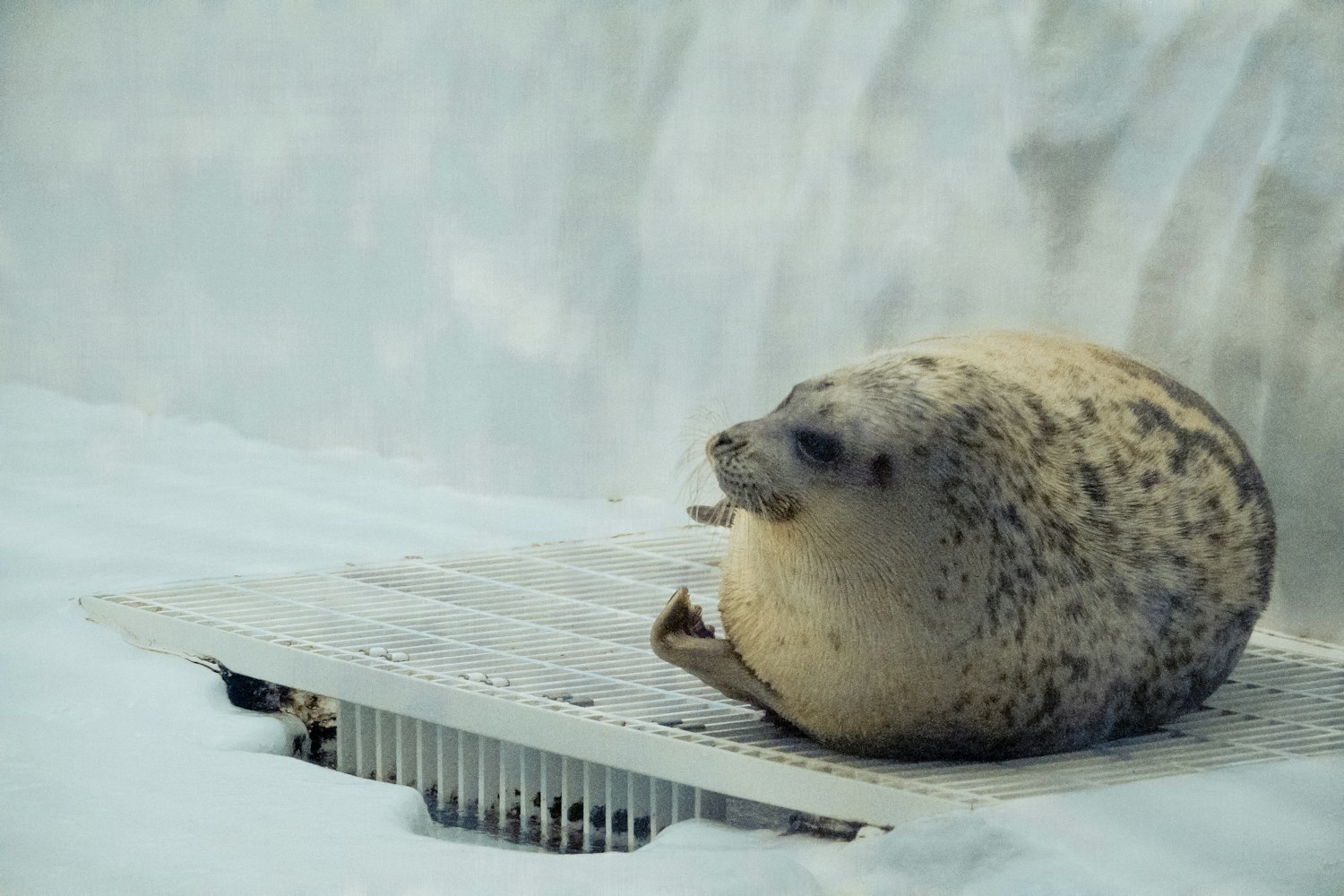
This exhibit mimics the rocky, cold-water habitat of the Aleutian Islands, a volcanic archipelago stretching between Alaska and Russia. The highlight here is the sea otters, known for their playful nature and endearing behaviors.
Another key attraction in this exhibit is the sea lions, which visitors can engage with closely while exploring the diverse habitats. Sea otters are intelligent animals that use tools like rocks to break open shells for food.
Watching them skillfully crack open shells is a testament to their adaptability and intelligence. Sea otters also have the densest fur of any animal, with up to one million hairs per square inch, which helps insulate them in icy waters.
They spend much of their day grooming to maintain this thick fur coat, which is fascinating. The habitat's design, featuring a rocky landscape and calm waters, lets you see how these animals thrive in such an environment.
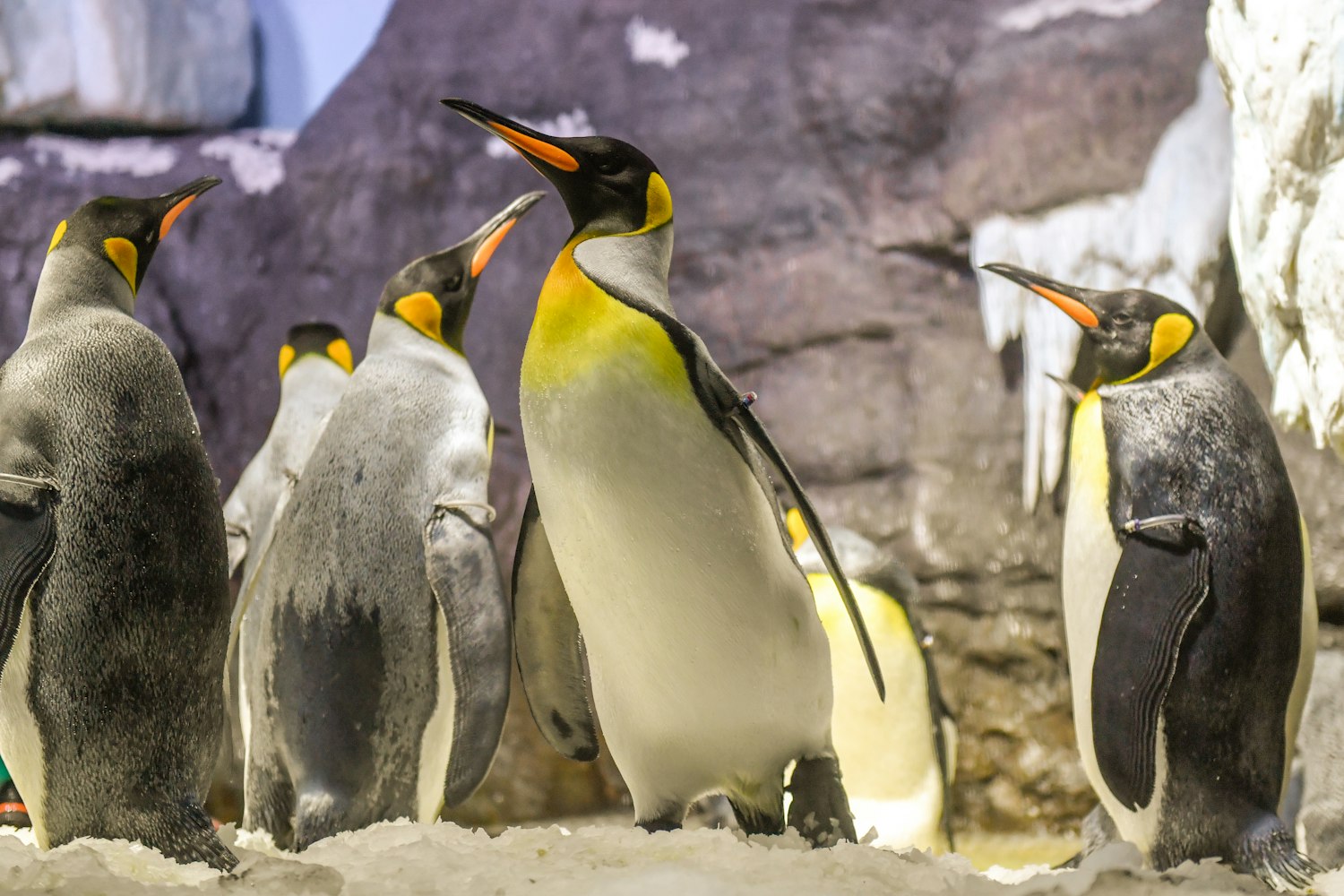
Another visitor favorite is the Antarctica Zone, which brings you face-to-face with a colony of penguins. Kaiyukan houses multiple species, including king penguins, which can reach heights of up to 100 cm, and gentoo penguins, known for their striking white patches above the eyes.
Penguins are uniquely able to adapt to frigid temperatures, and their high-energy swimming displays are captivating. In the wild, they rely on their streamlined bodies and powerful flippers to catch fish, squid, and krill.
The exhibit's chilled environment replicates the icy Antarctic, making the penguins feel at home. Watching these flightless birds dive and dart around is a delightful experience as they demonstrate their underwater strength and agility.

The Japanese Forest exhibit showcases Japan's diverse ecosystems, particularly its freshwater habitats. A highlight is the giant salamander, a unique creature found only in rivers in Japan and parts of China.
Giant salamanders are the world's largest amphibians, growing up to 1.5 meters in length, and are critically endangered due to habitat loss and pollution. The exhibit also contains other freshwater fish and plant species native to Japan.
The tranquil setup with flowing streams and lush vegetation offers an insight into Japan's natural beauty, allowing visitors to appreciate often overlooked creatures. This habitat's design emphasizes the importance of preserving Japan's unique ecosystems and the species that inhabit them.
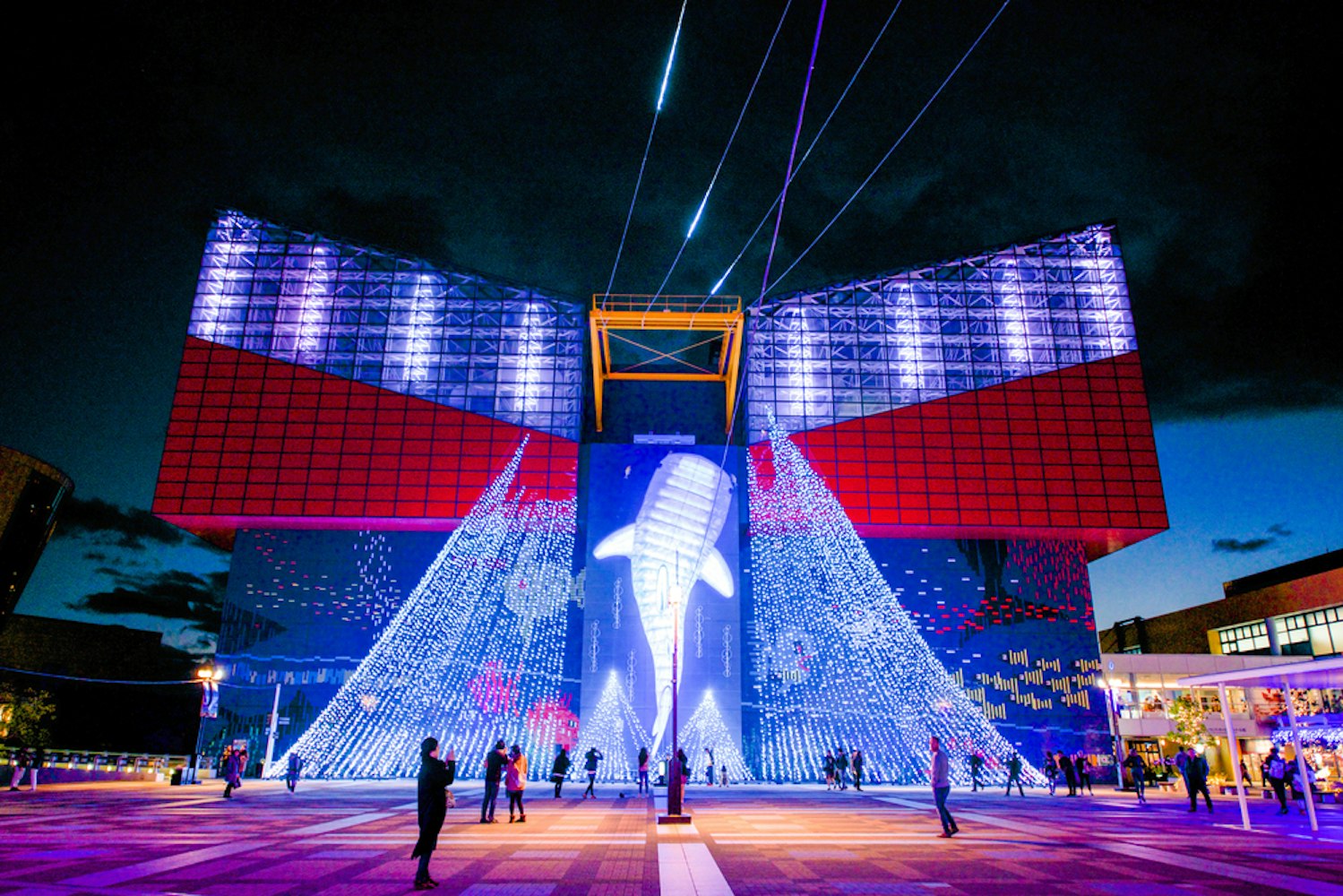
The Ecuadorian Rainforest exhibit brings the warmth and biodiversity of a tropical rainforest to life. This area is home to caimans, small crocodilian reptiles native to Central and South America.
Caimans can grow up to 2 meters long and are known for their strong jaws and distinctive armored bodies. Another crowd-pleaser here is the capybara, the world's largest rodent.
Capybaras are social animals often seen lounging in groups or dipping in the water. Known for their calm and friendly demeanor, they've become popular due to their unusual appearance and social habits.
The lush, green backdrop filled with tropical plants and colorful fish makes this exhibit a vibrant spot for learning about rainforest biodiversity.
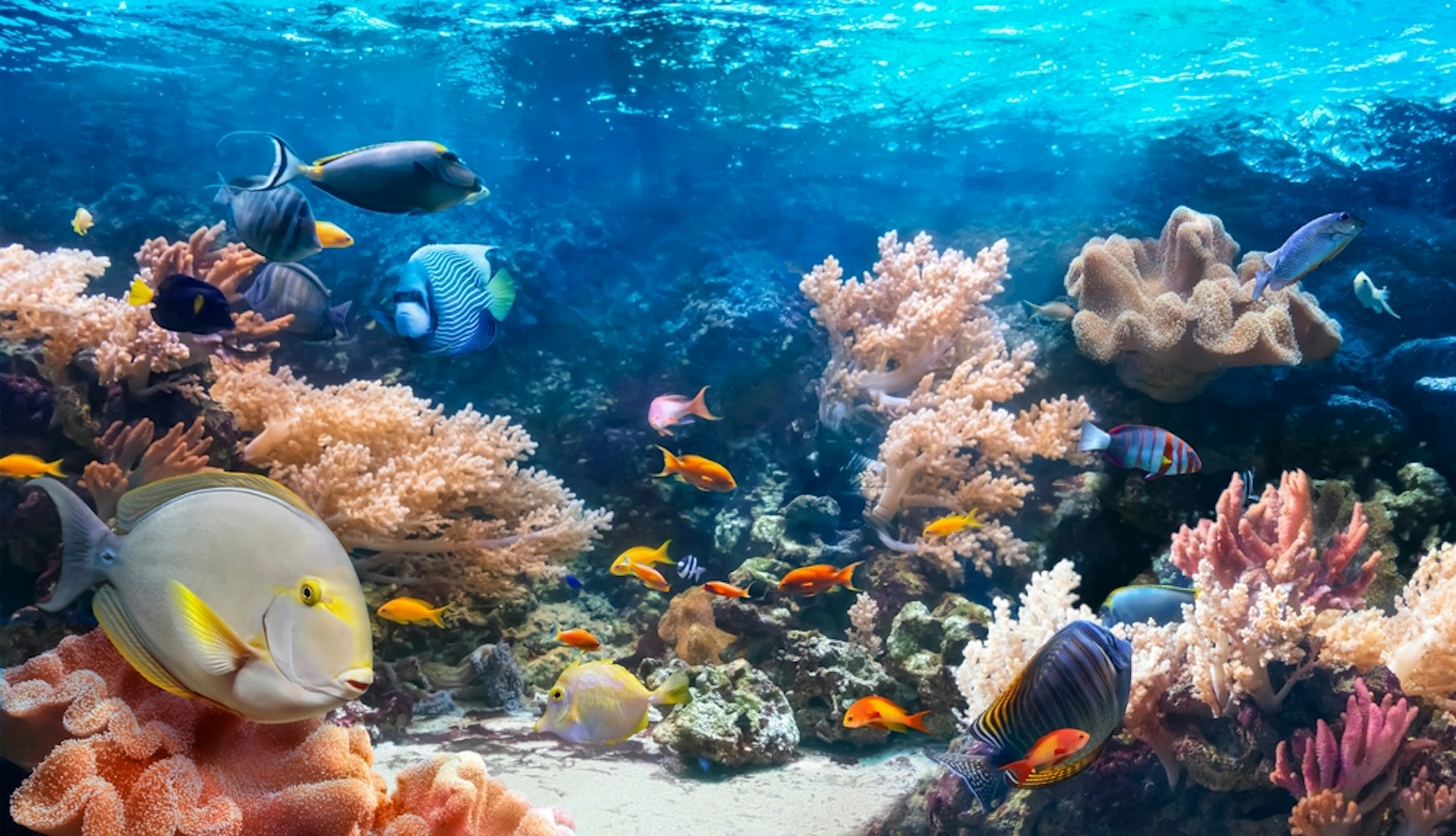
The Great Barrier Reef is known for being the world's most extensive coral reef system, and Kaiyukan's exhibit recreates a part of this underwater wonder. Coral reefs cover less than 1% of the ocean floor but are home to around 25% of all marine species, highlighting their ecological importance.
This exhibit features a dazzling array of corals, anemones, and fish that showcase the beauty and diversity of the reef. Some stars here include clownfish, which find shelter among anemones, and brightly colored parrotfish, which help maintain reef health by feeding on algae.
The Great Barrier Reef exhibit shows this fragile ecosystem and its many inhabitants, raising awareness about the need to protect coral reefs worldwide.
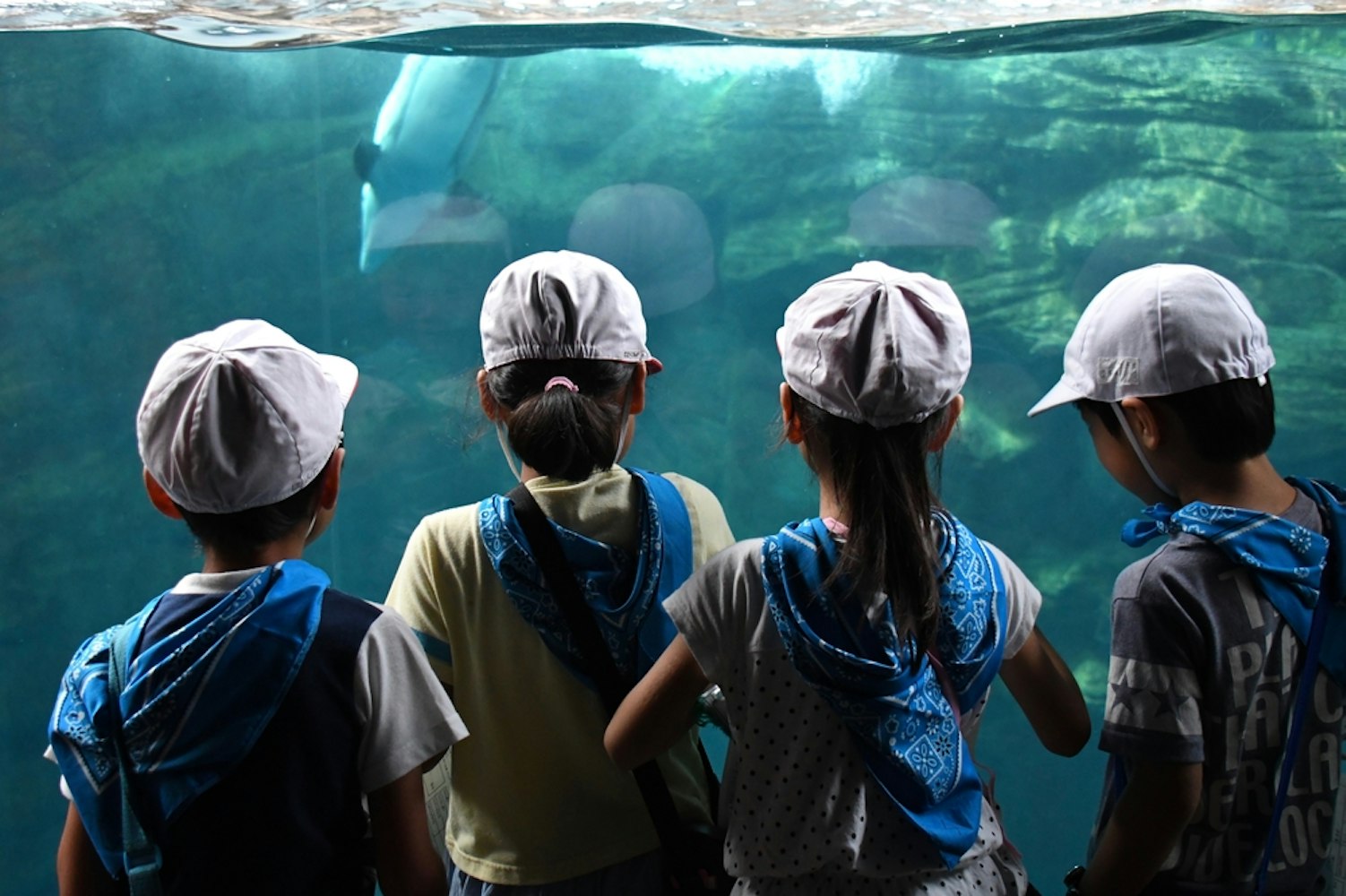
The Tasman Sea exhibit introduces visitors to the leafy sea dragon, one of the most fascinating creatures at Kaiyukan. Sea dragons are relatives of the seahorse and have unique, leaf-like appendages that allow them to blend into their surroundings, resembling floating seaweed.
This camouflage protects against predators, helping them survive in their natural habitats off Australia's southern and western coasts. Watching sea dragons drift gracefully in the water is almost like watching a piece of art come to life.
They're slow swimmers but extraordinarily delicate and rare, so Kaiyukan's efforts to display them help raise awareness about the challenges such unusual marine creatures face.
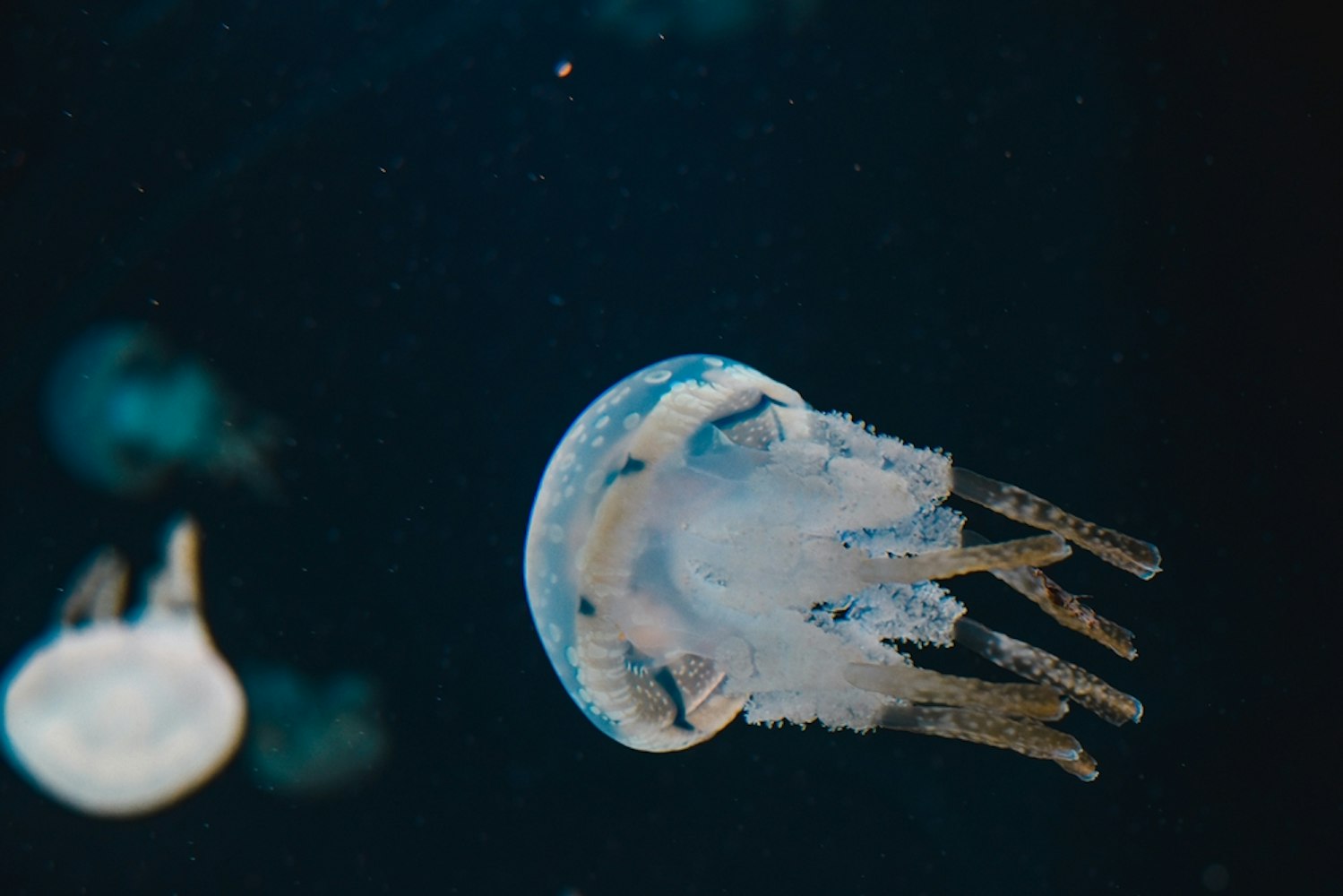
Jellyfish are some of the oldest and simplest creatures on Earth, and the Jellyfish Gallery at Kaiyukan offers a mesmerizing look at their ethereal beauty. This exhibit features multiple tanks, each with a different species, from the tiny and translucent moon jellyfish to the more giant and colorful lion's mane jellyfish.
Jellyfish have a unique structure. They lack a brain, heart, and bones and drift through the ocean with the currents.
Despite their simplicity, they're efficient predators with stinging cells that catch prey. This gallery has a dark and calming ambiance.
The jellyfish are illuminated in glowing tanks, creating a serene, almost hypnotic atmosphere. It's a reminder of the ocean's mysteries and the variety of life forms that exist in its depths.
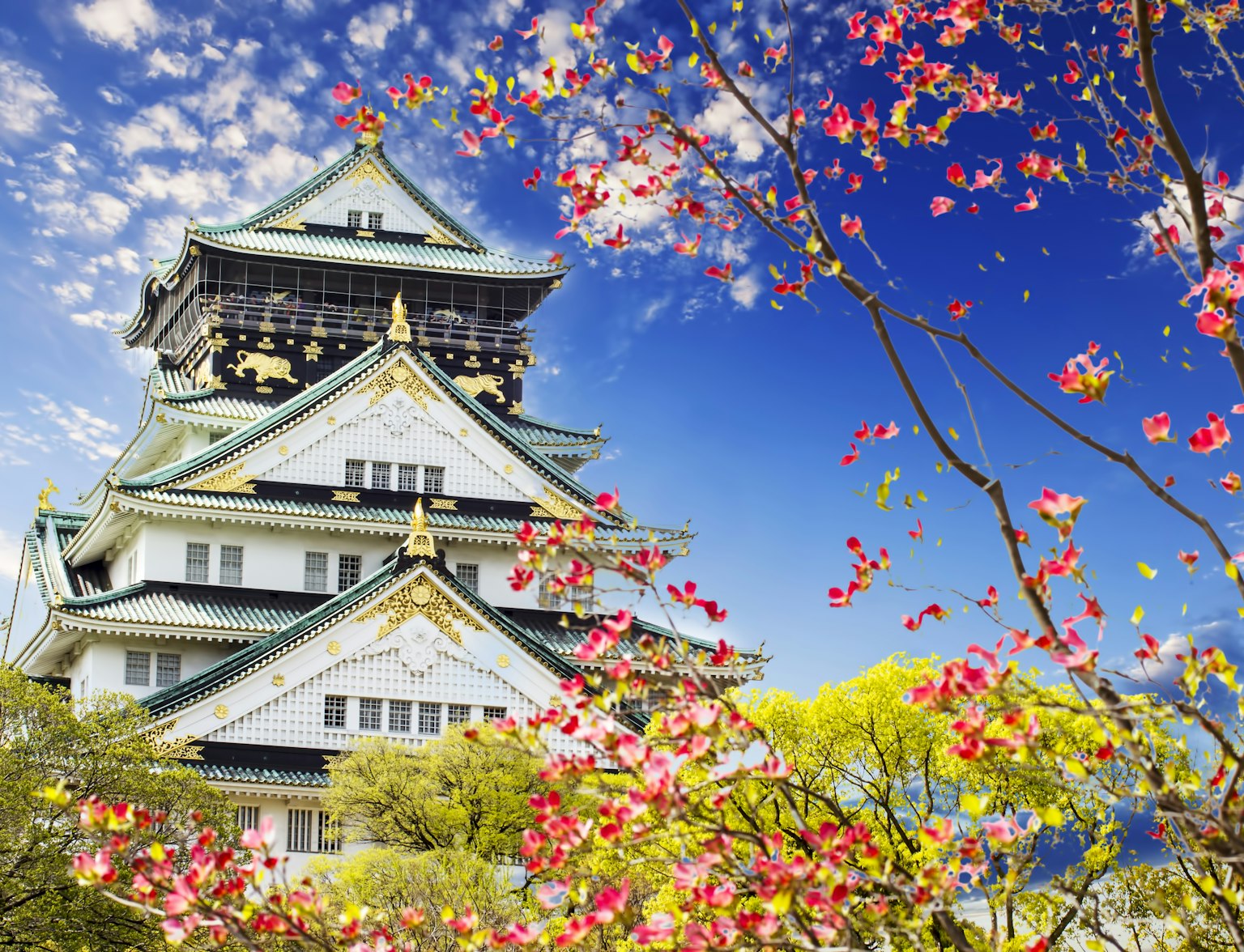
Unlock the best of Osaka with our exclusive one-day pass!
The Arctic Zone is home to ringed seals, whose curious faces and playful antics make them a visitor favorite. These seals are well-adapted to cold temperatures, with a thick layer of fat and a coat that helps them stay warm in freezing waters.
In the wild, ringed seals use their claws to maintain breathing holes in the ice, which they use to come up for air. Seals have sleek, streamlined bodies that make them excellent swimmers.
It allows them to catch fish, their primary diet, with ease. The Arctic Zone exhibit simulates the cold waters and icy environment of their natural habitat, providing visitors with a look at the challenges and adaptations of Arctic marine animals.
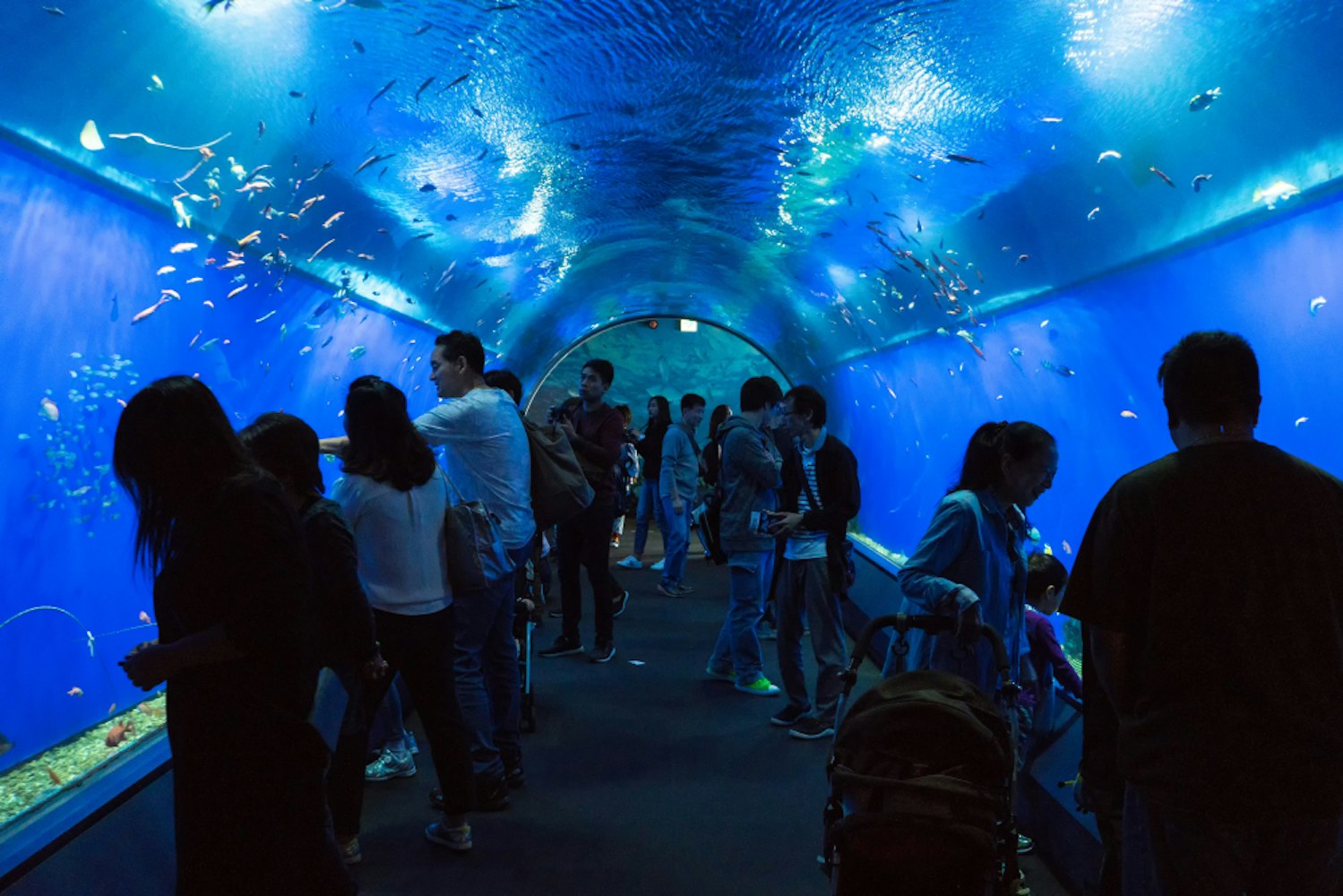
The Aqua Gate, an underwater tunnel, is one of the aquarium's most immersive features. Conveniently located just a five-minute walk from Osakako Station, the aquarium is easily accessible for visitors.
Walking through the Aqua Gate, you're surrounded by sea creatures swimming above and beside you, creating the sensation of being underwater. This tunnel is filled with stingrays, small sharks, and schools of vibrant fish.
The Aqua Gate's design gives visitors a close-up view of marine animals' behaviors and interactions, making it a memorable part of the journey through Kaiyukan. Being so close to these animals and watching them move freely around you is a powerful reminder of the complexity and beauty of ocean life.
The Osaka Aquarium Kaiyukan offers a variety of interactive experiences that allow visitors to get up close and personal with marine life. The aquarium features touch tanks where visitors can touch sharks and rays and a "Japan Forest" exhibit with trees and greenery.
Visitors can also explore the "Aqua Gate" aquarium, a tunnel-shaped aquarium that offers a unique viewing experience. Additionally, the aquarium offers feeding times and interactive elements, providing an exceptional experience for visitors.
Location: The aquarium is located in the Tempozan Harbor Village in the Osaka Bay area.
Osaka Aquarium Fee: Admission fees for adults are typically around ¥2,700, with discounted tickets available for children and seniors. Check for seasonal promotions or group discounts.
Operating Hours: Kaiyukan is usually open from 10:30 AM to 8:00 PM, but it's best to check the official website for any changes in hours due to holidays or special events.
Accessibility: The aquarium is fully accessible, with wheelchair ramps and elevators throughout the complex.
Dining and Souvenirs: Visitors can enjoy a range of dining options nearby, as well as a gift shop offering aquarium-themed souvenirs, including plush toys, keychains, and exclusive Kaiyukan memorabilia.
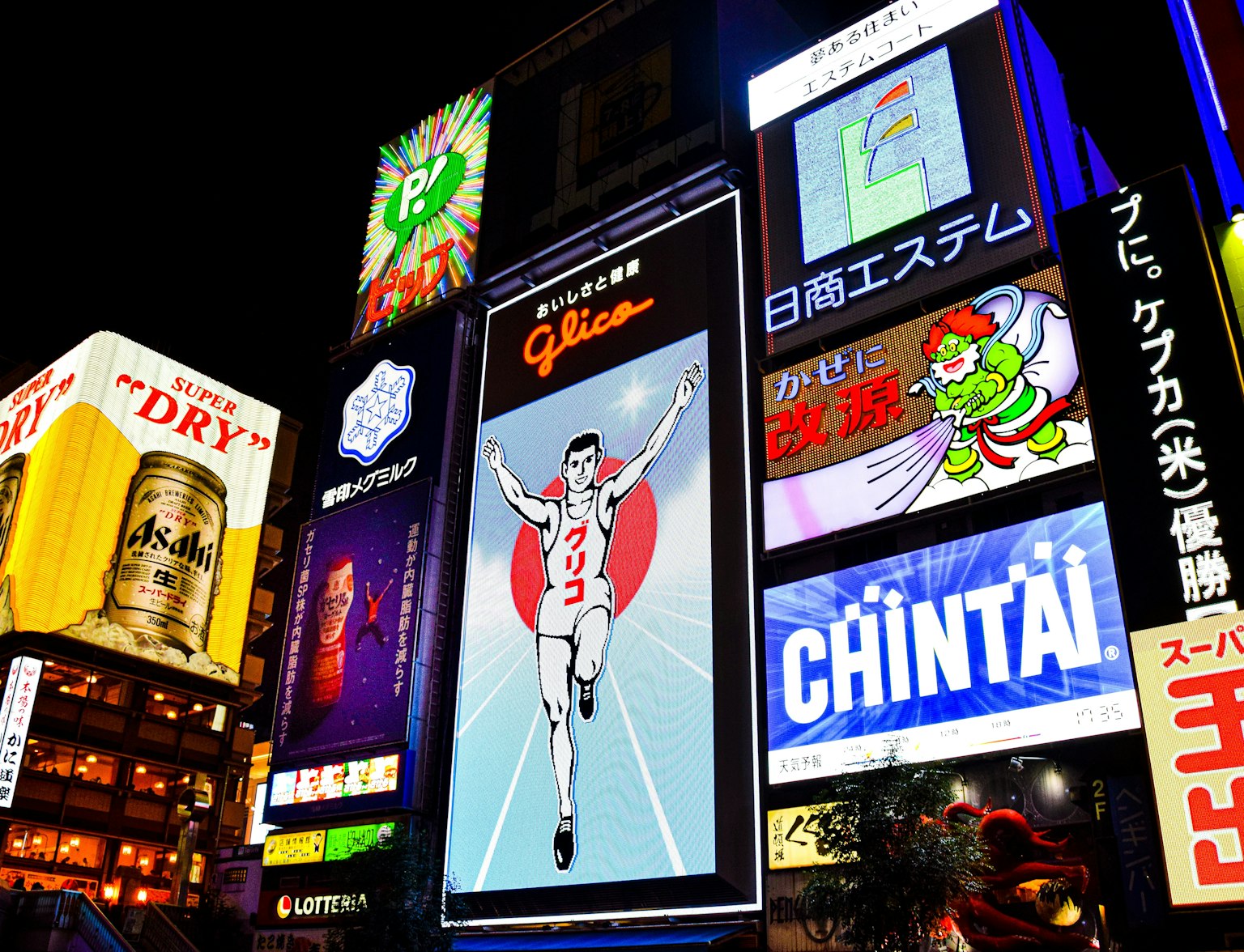
Discover the modern city of Osaka on this exclusive full-day Private Guided Tour!
Osaka Aquarium Kaiyukan offers a rare opportunity to see diverse marine habitats and species from the Pacific Rim up close, making it a must-see for marine life enthusiasts. With carefully crafted exhibits, from the massive Pacific Ocean tank to unique displays like the Jellyfish Gallery, the aquarium provides insights into the lives and behaviors of ocean creatures worldwide.
Each exhibit showcases the beauty and variety of marine life, creating an engaging and educational experience. If you're in Osaka, Kaiyukan is a destination that promises unforgettable encounters with the wonders of the sea.

Discover Osaka's top attractions with a private vehicle tour.



